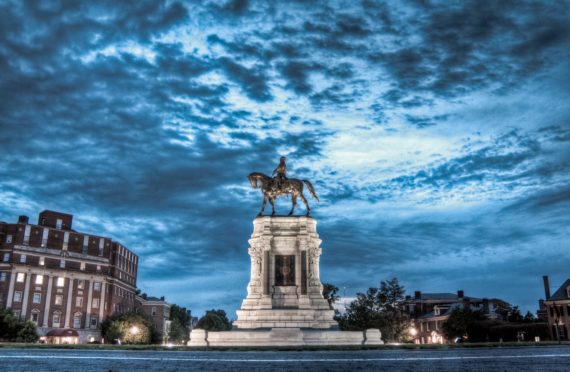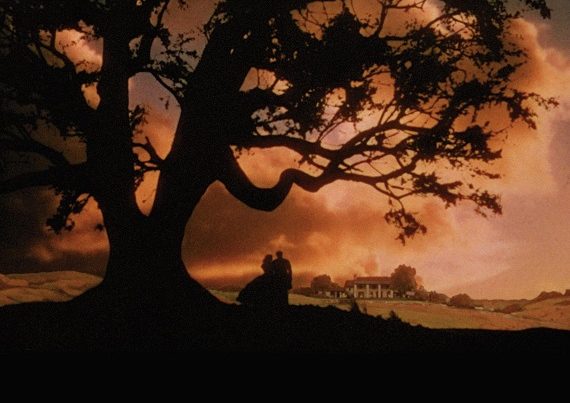During the ongoing debate regarding the removal of the monuments honoring Confederate Generals, those in support of the statues often say in defense, “The statues are part of America’s history; we need to learn from history.”
While this statement is of course true, I do not believe it is appropriate in this context, as “learning from history” is synonymous with “learning from our mistakes.” A more accurate (though accidental) translation would be, “We need to keep Robert E Lee’s statues up because he was a bigot who fought to keep Blacks enslaved… and we need to learn from our mistakes.”
General Lee’s life was not a “mistake to learn from.” The lives of the vast majority of the Confederate Generals were not a “mistake to learn from.” The statues commemorating their lives are a positive thing.
Why would I make such a claim?
Much like the Confederate Battle Flag has been hijacked by white trash racist, the stories of these men have been hijacked by those with no understanding of the Warrior’s Ethos or the Code of Honor under which these men lived. Robert E. Lee, Stonewall Jackson, J.E.B Stewart, George Pickett, A.P. Hill… these were men of extraordinary honor.
All of them were up-and-comers in the United States Army. They had great futures ahead of them. Many were rich. But when it came time to choose between “nation and kin,” they chose kin. They chose their neighbors. They said, “We will hold this line, and you will not invade our native lands. You will not impose your will on us.”
I’d be hopeful that my nephews—if forced to choose between their loyalty to America and their loyalty family and community—would choose family and community.
The Officers of the Confederacy were not stupid. Yes, the majority of the Army of Northern Virginia was illiterate, but their leaders were not. These men knew quite well the odds they were up against, as they were badly outnumbered, outgunned, and facing a limitless Federal treasury.
Yet, they stood the line.
I do not believe Stonewall Jackson thought, when a bullet pulverized his arm, “Damn! Now I won’t be as effective at keeping Blacks in chains!”
I do not believe George Pickett led his men into almost-certain death at Gettysburg to ensure his slaves remained human property.
I do not believe A.P. Hill, when challenged by a Union soldier to surrender, refused and was subsequently shot to death because he was thinking, “I’d rather be dead than live in a nation with freed Slaves.”
Combat veterans will tell you patriotism becomes a point of morbid humor after the gunfighting begins. Men at war cease to care about their country. They think about family, and care about their honor and the men around them. “Country” comes in behind what’s for chow.
I believe the statues should remain, because those men are—or should be—the very essence of what we want our children to be. They gave up everything to stand up and defend those they loved.
There is a statue in Central Park of William T. Sherman, arguably the cruelest commander in modern history. If one is unaware of the details of his crucifixion of the South and his wholesale slaughter of American Indians, we suggest reading about the topic.
Sherman wrote to his wife, “my purpose was the extermination, not of soldiers alone…but of the people” of the South.
Sherman wrote on Jan 31, 1864, “The government of the U.S. has any and all rights which they choose to enforce in war (on Southerners)- to take their lives, their homes, their land, their everything…war is simply unrestrained by the Constitution…to the persistent secessionist, why, death is mercy, and the quicker he or she is disposed of the better.
It was Sherman who wrote, “The more Indians we can kill this year the fewer we will need to kill the next, because the more I see of the Indians the more convinced I become that they must either all be killed or be maintained as a species of pauper. Their attempts at civilization is ridiculous.”
These are his own words, which cannot be disputed, yet he remains astride his horse in Central Park. Never has any historian assigned anything remotely resembling Sherman’s psychopathic behavior to the Southern Generals listed above.
On the other hand, it was common for Confederate Soldiers to weep when they had the chance to simply lay eyes on General Lee as he rode by. Is it’s because they were thinking, “There goes the greatest bigot of all time”?
Or is it because they thought, “There goes an Officer and a Gentleman. A man who thinks of us before he thinks of himself. A man who wants to ride towards the front of the column within range of the enemy, despite the danger to himself.”
The issue of slavery and the Southern Cause will never be separated, unless the whole truth is told in context. But the fact is that, in 1860, just about every white man alive was horribly racist—North and South. Congressmen from the North didn’t care about the slaves any more than the Southerners—there were ZERO bills presented to Congress to outlaw slavery in the 1850s. President Lincoln stated and wrote on numerous occasions his goal was to preserve the Union, and if that meant maintaining slavery, so be it. The Emancipation Proclamation was merely a strategic decision, made after the perceived Northern victory at the Battle of Sharpsburg; Lincoln hoped the Proclamation would inspire slaves to flee the South, and join the fight against the rebellion.
The last words of Robert E. Lee were, “Strike the tent.”
I fear America is striking the tent on the kind of honor that used to mold a man—North, South, Black, and White. We are a nation obsessed with “toxic masculinity,” a laughable debate about gender, the importance of feelings over facts, and demanding our young boys mirror the behavior of young girls.
Fifty years from now, perhaps these statues can become history lessons, as fathers can point them out to their sons and simply say, “He was a man.” It may be a concept lost to future generations.







